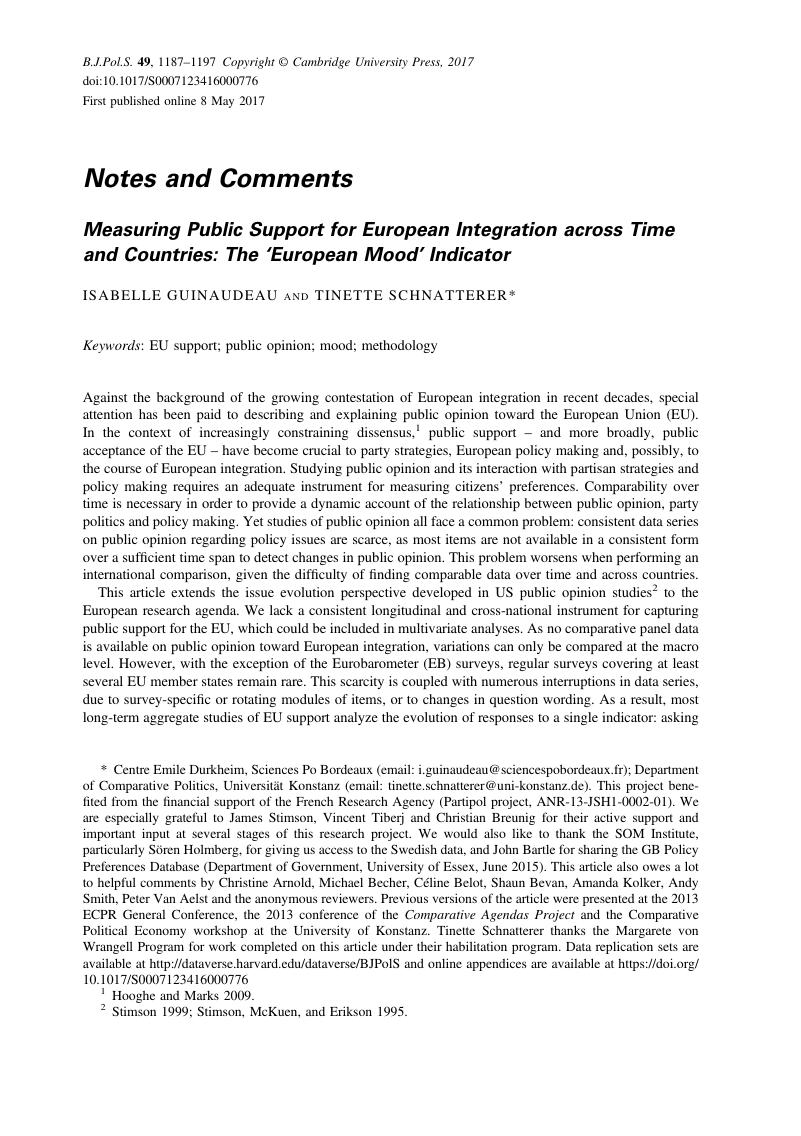Article contents
Measuring Public Support for European Integration across Time and Countries: The ‘European Mood’ Indicator
Published online by Cambridge University Press: 08 May 2017
Abstract

- Type
- Notes and Comments
- Information
- Copyright
- © Cambridge University Press 2017
Footnotes
Centre Emile Durkheim, Sciences Po Bordeaux (email: i.guinaudeau@sciencespobordeaux.fr); Department of Comparative Politics, Universität Konstanz (email: tinette.schnatterer@uni-konstanz.de). This project benefited from the financial support of the French Research Agency (Partipol project, ANR-13-JSH1-0002-01). We are especially grateful to James Stimson, Vincent Tiberj and Christian Breunig for their active support and important input at several stages of this research project. We would also like to thank the SOM Institute, particularly Sören Holmberg, for giving us access to the Swedish data, and John Bartle for sharing the GB Policy Preferences Database (Department of Government, University of Essex, June 2015). This article also owes a lot to helpful comments by Christine Arnold, Michael Becher, Céline Belot, Shaun Bevan, Amanda Kolker, Andy Smith, Peter Van Aelst and the anonymous reviewers. Previous versions of the article were presented at the 2013 ECPR General Conference, the 2013 conference of the Comparative Agendas Project and the Comparative Political Economy workshop at the University of Konstanz. Tinette Schnatterer thanks the Margarete von Wrangell Program for work completed on this article under their habilitation program. Data replication sets are available at http://dataverse.harvard.edu/dataverse/BJPolS and online appendices are available at https://doi.org/10.1017/S0007123416000776
References
- 14
- Cited by


